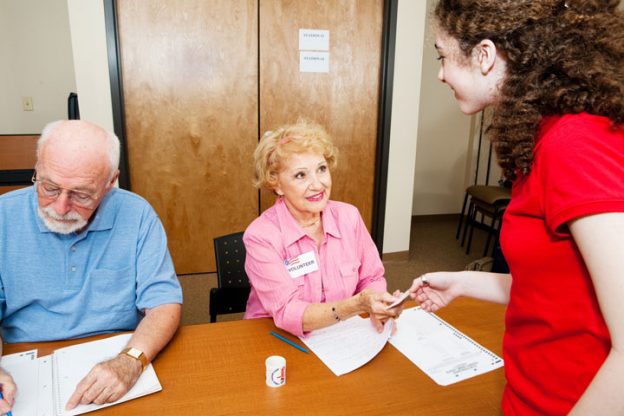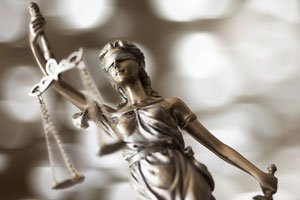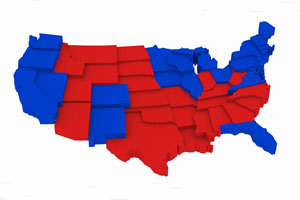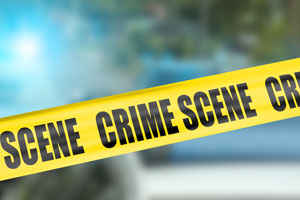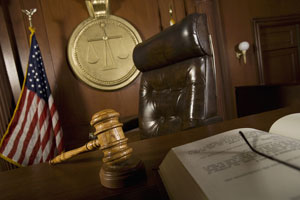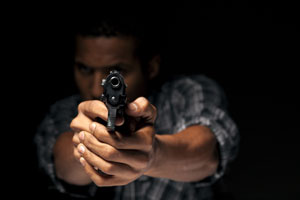Three plaintiffs, representing a class of State Farm insurance policy holders, have sued State Farm in an Illinois federal court for conspiring to corrupt the Illinois judicial process. The plaintiffs in Hale v. State Farm contend that State Farm engineered the election of Lloyd Karmeier to the Illinois Supreme Court.
The plaintiffs allege that after the election, Karmeier participated in a decision that benefitted State Farm by overturning a $1 billion judgment in Avery v. State Farm. The Avery lawsuit accused State Farm of using inferior parts to make vehicle repairs.
The plaintiffs recently challenged State Farm’s proposed expert witnesses. The court decided that one witness could testify but rejected another on the basis that the proposed testimony was not that of an expert.
Lawsuit Allegations
The class action lawsuit is based on federal racketeering laws. The suit contends that State Farm and others participated in a “criminal enterprise” designed to elect a state supreme court justice who would vote in State Farm’s favor when the court decided the Avery appeal. Other defendants in the lawsuit include an attorney for State Farm and the president of the Illinois Civil Justice League (ICJL), an advocacy group that promotes the interests of businesses in the Illinois justice system.
The class action complaint states that Hale and the other plaintiffs in the Avery case won a judgment of more than $1 billion against State Farm on behalf of 4.7 million State Farm policy holders. That judgment was upheld by the Illinois Court of Appeals. The Illinois Supreme Court agreed to review the judgment on October 2, 2002. Briefing was completed in May 2003 but the Illinois Supreme Court did not issue a decision until April 18, 2005.
Beginning in the fall of 2003, Lloyd Karmeier began a campaign for election to a vacant seat on the Illinois Supreme Court. Karmeier won. The Avery plaintiffs filed a motion to disqualify him from participating in the Avery case because of the financial support State Farm provided to his campaign. State Farm opposed the motion, claiming that its financial support of Karmeier was “modest.” Karmeier declined to remove himself from the case. He ultimately voted to reverse the judgment.
In 2010, the Avery attorneys began an investigation with the assistance of a retired FBI agent. According to the plaintiffs, the investigation revealed evidence that State Farm, acting through the ICJL, recruited Karmeier, directed his campaign, developed a network of contributors, and funneled as much as $4 million in contributions and in-kind services to the campaign.
In addition, the investigation revealed that State Farm’s CEO sat on the “leadership team” of the U.S. Chamber of Commerce that selected judicial races to target in 2004. The Illinois Supreme Court race was one of the targeted elections. State Farm contributed $1 million to the U.S. Chamber of Commerce, which contributed $2 million to the Illinois Republican Party, which paid for nearly $2 million in media advertisements for Kanmeier.
The complaint alleges that State Farm concealed and misrepresented those facts when it opposed the motion to disqualify Karmeier. The complaint further contends that State Farm committed mail fraud by mailing fraudulent statements of fact to the Illinois Supreme Court and to other parties in the Avery case.
District Court’s Rulings on Expert Witnesses
State Farm proposed to call former state elections board director Ronald Michaelson as an expert witness. As required by the Federal Rules of Evidence, Michaelson prepared an expert witness report. The plaintiffs’ attorneys filed a motion to exclude Michaelson’s testimony.
Most motions asking a federal court to rule on the admissibility of expert testimony hinge on the Daubert test. Before a court decides whether the expert based his or her opinions on adequate data and a reliable methodology, however, the court must decide whether the proposed testimony would be helpful to the jury. The court decided that Michaelson’s opinions would not help the jury decide the case.
Michaelson would have summarized the contributions that each judicial candidate received from various sources. He particularly called attention to contributions that the plaintiffs’ lawyers made to Kanmeier’s opponent. Some of the report focused on contributions that concerned Kanmeier’s retention election, which occurred long after the Illinois Supreme Court decided the Avery case.
The court concluded that Michaelson’s report contained no expert analysis. Rather, it was a summary of publicly available campaign contributions with the addition of “an editorial.” The court faulted Michaelson for doing “no probing” or “independent analysis” of the data.
Using harsh language, the court concluded that Michaelson “performed a rudimentary analysis/report that contains bias that can be associated with the consulting fee paid to him.” The court held that Michaelson’s opinions were inadmissible because they “do not rise to the level of expert testimony and will not help the fact finder” decide disputed issues.
The court decided that it would allow economist Lauren Stiroh to testify as an expert for State Farm. Stiroh would testify that Kanmeier’s vote in the Avery case did not matter because a majority of the justices would have voted in State Farm’s favor on key issues even if Kanmeier had not participated. The plaintiffs argue that Stiroh’s opinion is based on speculation, since the degree to which Kanmeier persuaded the other justices to vote in favor of State Farm cannot be known. The court disallowed some of Stiroh’s testimony on the ground that it invaded the judge’s authority to instruct the jury on the law.
The case is scheduled for trial next year. The court is likely to resolve additional issues regarding expert witnesses before the trial date arrives.



